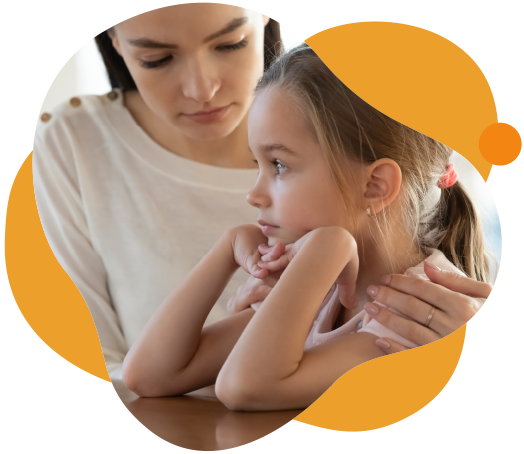Why Trauma Support?
- 7 out of 10 teens are grappling with mental health issues - 55% reported anxiety, 43% depression, and 27% worried about running out of basic necessities in their household during the pandemic.
- Youth ages 11-17 have been more likely than any other age group to score for moderate to severe symptoms of anxiety and depression.
- Youth ages 11-17 report the highest rates of suicidal ideation of any age group.
- Rates of suicidal ideation are highest among youth, especially LGBTQ+ youth.
Sources: The Harris Poll, May 2020 and Mental Health America 2021
Pre-pandemic, more than 60% of students reported at least one traumatic event by the time they were 16 years old. Traumatic events include:
- Psychological, physical, or sexual abuse
- Community or school violence
- Witnessing or experiencing domestic violence
- National disasters or terrorism
- Commercial sexual exploitation
- Sudden or violent loss of a loved one
- Military family-related stressors (e.g., deployment, parental loss, or injury)
- Physical or sexual assault
- Neglect
- Serious accidents or life-threatening illness
Since the COVID-19 pandemic, 100% of students have experienced at least one traumatic event before reaching adulthood. The biggest societal change that we are facing is COVID-19. It exacerbated what we were already struggling with prior: poverty, trauma, access to technology, and equity for students. As educators, we cannot turn a blind eye to this as it directly impacts student behavior and outcomes.
The impact of childhood trauma can extend beyond childhood, and survivors may experience more lasting effects, such as learning problems, increased need for physical and mental health services, increased involvement with child welfare and juvenile systems, as well as increased vulnerability to substance abuse and long-term health problems. However, with trauma support in their schools and communities, children and young adults can successfully process and overcome these adverse events. The National Association of School Psychologists has pointed out that trauma-informed/trauma-sensitive schools are integrated with Restorative Practices and promote:
- Feelings of physical, social, and emotional safety in students and staff
- A shared understanding among staff about the impact of trauma and adversity on students
- Positive and culturally responsive discipline policies and practices
- Access to comprehensive school mental and behavioral health services
- Effective community collaboration











